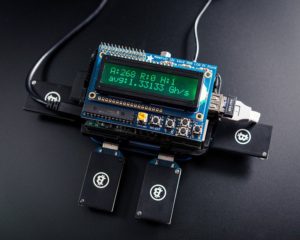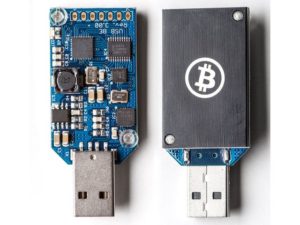 If there was one technology that epitomized 2017 it was blockchain currency. Without a central bank, the value of this virtual currency is maintained by a peer to peer ledger that encrypts via hashing to manage a set number of coins. This general ledger is a long list of blocks, known as the ‘blockchain’. It can be used to explore any transaction made between any bitcoin addresses, at any point on the network. Whenever a new block of transactions is created, it is added to the blockchain, creating an increasingly lengthy list of all the transactions that ever took place on the bitcoin network. A constantly updated copy of the block is given to everyone who participates, so that they know what is going on.
If there was one technology that epitomized 2017 it was blockchain currency. Without a central bank, the value of this virtual currency is maintained by a peer to peer ledger that encrypts via hashing to manage a set number of coins. This general ledger is a long list of blocks, known as the ‘blockchain’. It can be used to explore any transaction made between any bitcoin addresses, at any point on the network. Whenever a new block of transactions is created, it is added to the blockchain, creating an increasingly lengthy list of all the transactions that ever took place on the bitcoin network. A constantly updated copy of the block is given to everyone who participates, so that they know what is going on.
But a general ledger has to be trusted, and all of this is held digitally. How can we be sure that the blockchain stays intact, and is never tampered with? This is where the miners come in. Every time someone successfully creates a hash, they get a reward of 25 bitcoins, the blockchain is updated, and everyone on the network hears about it
Since bitcoin mining relies more and more on individual processor cards instead of a single high-cost machine, the ability to build parallel machine out of cheap PIs makes economic sense rather than spending $6k for a ASICs machine. For a total cost of $120.00 which includes he specialized powered USB drives, SD card that runs a version of Linux called Raspbian, and a key pad, you can put a dedicated machine running hashing algorithms to maintain the largest peer-to-peer general ledger in existence.
The Raspberry Pi provides the processing power, however the encryption is accomplished through a powered USB mining device, such as Block Erupter USB, or Klondike1

If you’re mining device is powered via USB (such as the Block Erupter USB, or Klondike1), you’ll need to connect it to a powered hub, which then connects to the Pi. Mining devices which use external power should be happy with either direct or hub connection.
https://learn.adafruit.com/piminer-raspberry-pi-bitcoin-miner/start-mining
https://learn.adafruit.com/piminer-raspberry-pi-bitcoin-miner/initial-setup-and-assembly

2 responses to “Mining Bitcoin with a Raspberry PI”
How long does it have to run before a block chain is deencrypted?
Roughly 6 hours per block per USB device